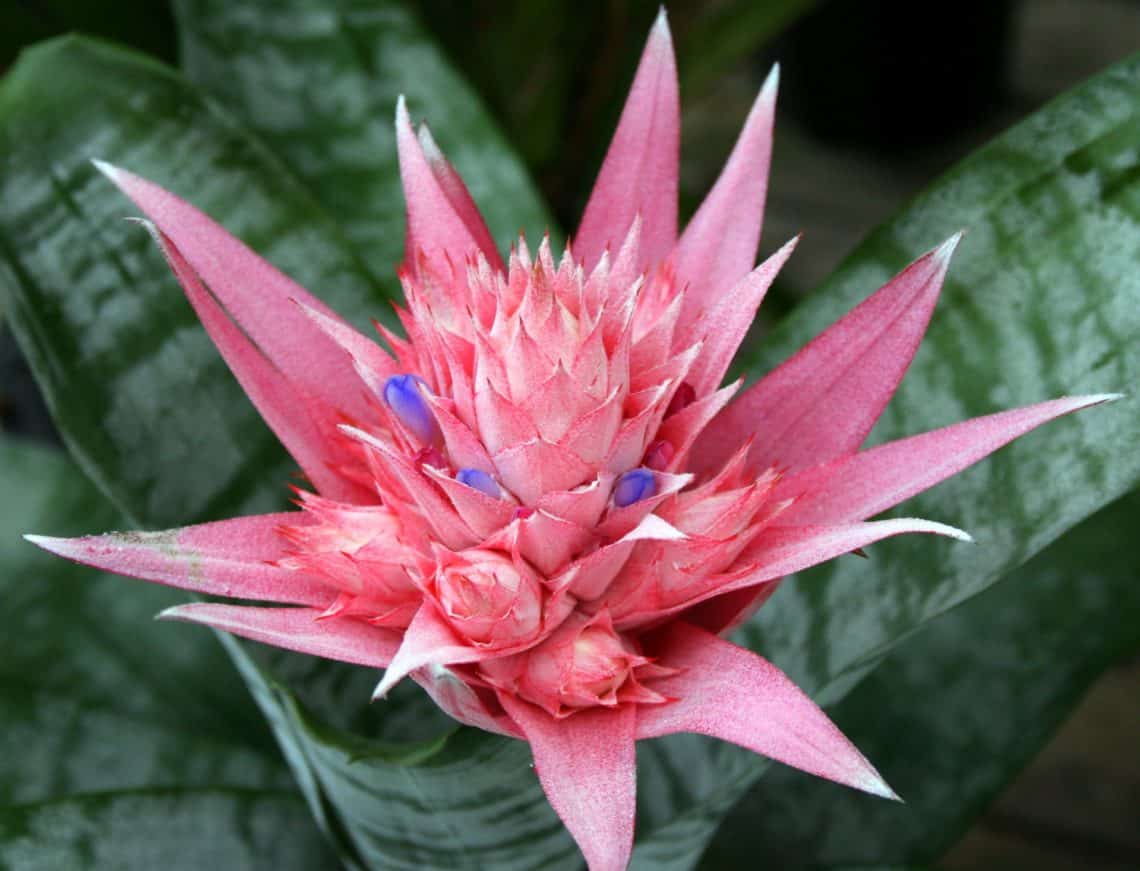Grow a bromeliad and you’re likely to be hooked for life. These colorful members of the pineapple family produce vibrant, unusual blooms that can last for months in the garden.
Bromeliads are native to South America, but grow in many climates. The most famous of all bromeliads is the pineapple, though there are many other types, including tillandias, like Spanish moss, which grows suspended from trees in its natural habitat.
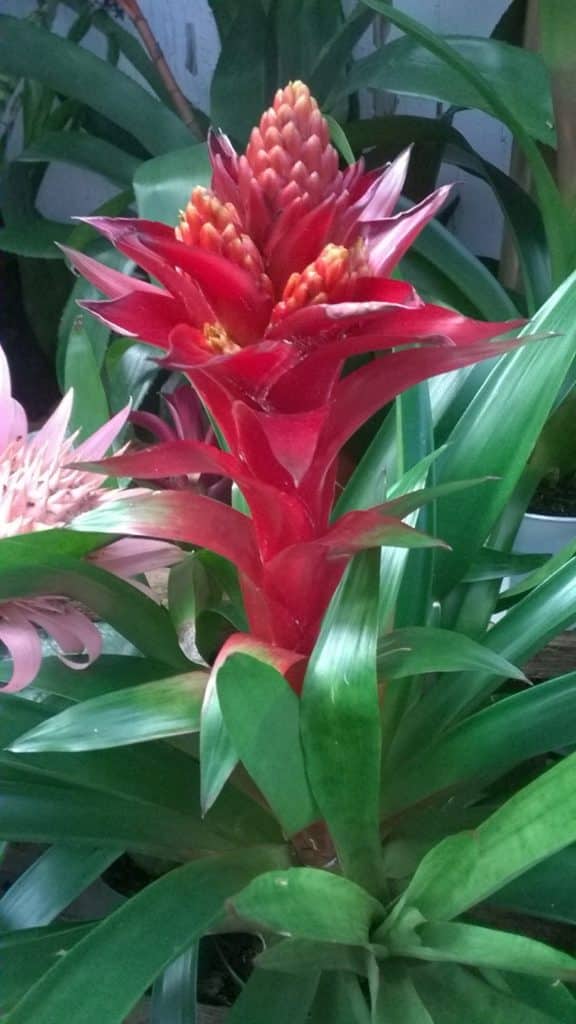
Many bromeliads can be grown in soil in containers. These include guzmanias, which feature tall, eye-catching flowers, and neoregalias with their colorful foliage. Displaying an eye-catching, architectural look, bromeliads give the landscape an exotic, tropical feel.
Bromeliads are easy-care plants and do best with a little neglect. In nature, they receive nutrients from the air or in liquid form when water containing nutrients collects in the cups that form the center of their leaves. From these cups the showy flowers emerge. When the plant finishes flowering, it produces a nearby pup of foliage that eventually produces another flower.
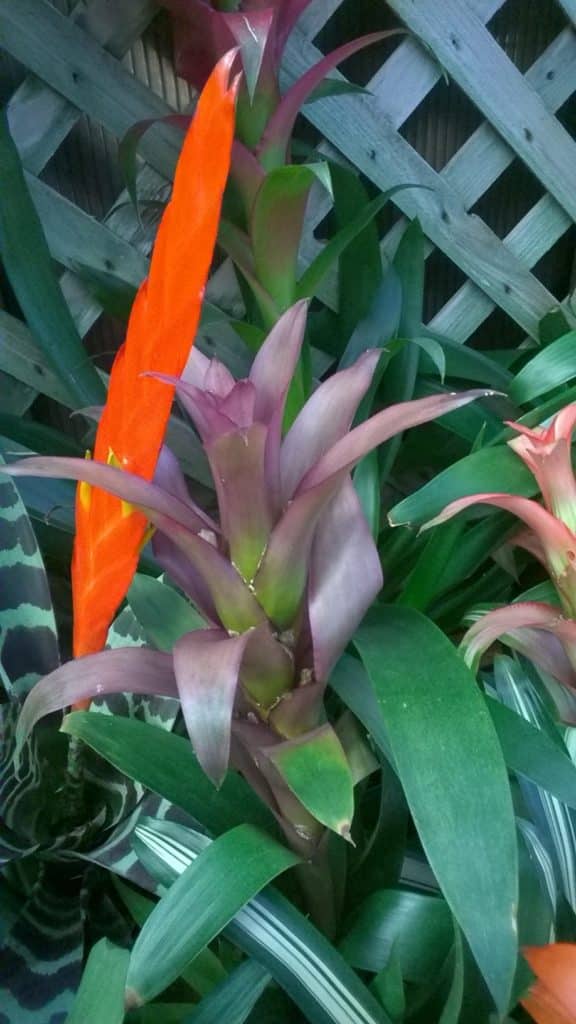
To have luck growing bromeliads, keep the following tips in mind.
Water properly. Accustomed to jungle life, where it rains and then often dries out prior to raining again, bromeliads need to be watered in their cups and soil and then don’t water again until the flower cup and soil are dry.
Although it’s often suggested that you keep the flower cups full of water at all times, that will actually tend to rot the flowers prematurely. Overwatering causes browning of leaves and flowers.
Provide excellent drainage. Both potted and ground growing bromeliads do poorly with wet feet. Amend with pumice or perlite to encourage good drainage.
Place in proper lighting. Most bromeliads need to be grown in filtered sunlight. If you grow them in direct sun, that will usually brown the plant’s flowers and yellow its leaves.
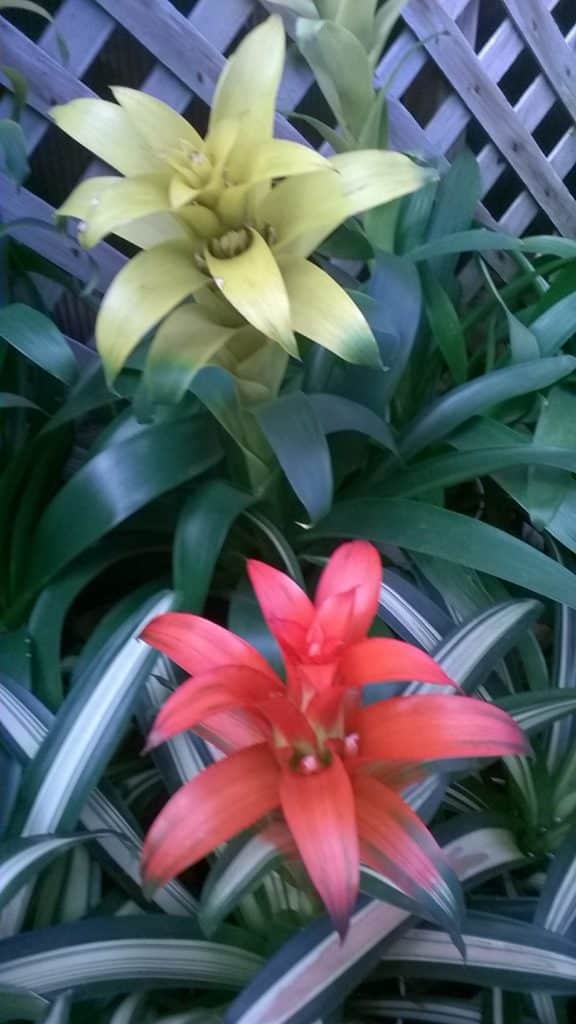
Protect from dry winds and weather. Bromeliads shouldn’t be overwatered, but they also respond poorly to extra dry air. If you live in a climate that is dry or windy, mist the plants on low humidity days.
Plant in containers. Though bromeliads do grow in the ground, the excellent moisture they require makes it difficult to grow them successfully. Instead plant in a pot containing well-draining, organic potting soil.
Suspend tillandsias, including Spanish moss, using plastic, 20-pound-weight fishing twine. Hang the twine from a hook or loosely around the tree trunk or limb. Check periodically to make sure that the twine is still loose.
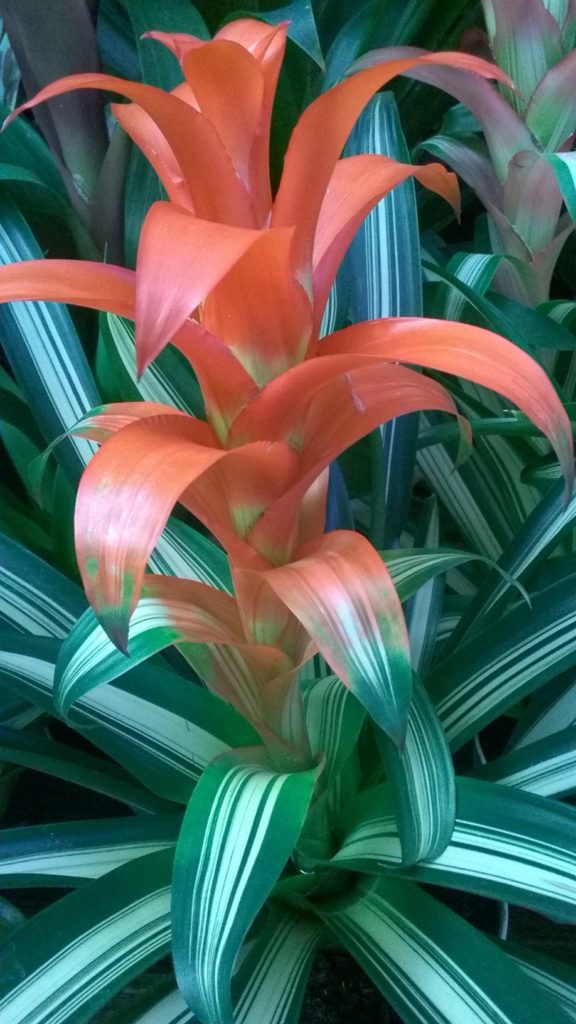
Prune and clean up periodically. Remove old flower stalks once they become unsightly. Wait to remove foliage where the old bloom grew until the plant has created a new plant nearby.
Julie Bawden-Davis is a garden writer and master gardener, who since 1985 has written for publications such as Organic Gardening, The American Gardener, Wildflower, Better Homes and Gardens and The Los Angeles Times. She is the author of 10 books, including Reader’s Digest Flower Gardening, Fairy Gardening, The Strawberry Story Series, and Indoor Gardening the Organic Way, and is the founder of HealthyHouseplants.com

